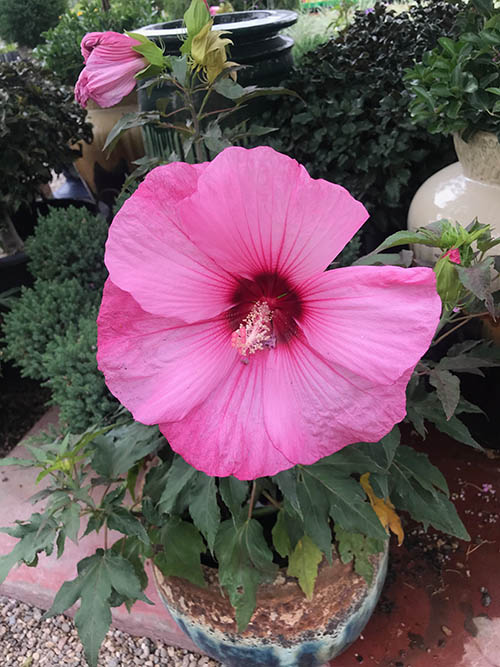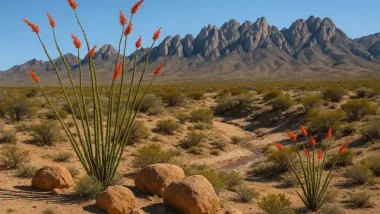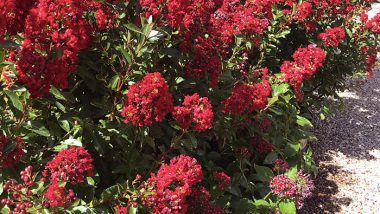Last updated on December 29th, 2024 at 08:13 am
Hibiscus plant species. The hardy Hibiscus plants love the hot Southwestern sun. They also like humidity and moist soil. It is not a drought tolerant plant but with a good drip system, it will thrive and produce dinner plate size flowers from late spring until late fall.
Hibiscus plants are perennials
Yes, they will come back year after year. They are very easy to grow and come in a wide range of colors from deep dark red to light lavender color. Deciduous plants take time before they start to grow back from the winter season.
Care of Hibiscus Plants
Plant them in full hot sun a little shade in the morning or afternoon hours is fine. You can plant them in the back of your garden and in front of other shorter annuals or perennials. The blooms will last about one day but they will produce new buds that will continuously bloom day after day…until late fall when they will go dormant. Cut back during the early winter season and they will spring out in late spring.

Grows in USDA zones 4-10
Types of Hibiscus plants
The Stardust Hibiscus – Large pink blooms that have a small red eye, exotic darker venation, and pale pink stamens with yellow anthers. Upright and showy flower, with a rounded form of green, purple-tinged foliage that provides an attractive backdrop to the showy blooms. A great plant to use in sunny beds and around borders in most garden landscapes.

The Dave Fleming Hardy Hibiscus
Very large, hot ruby-red flowers with contrasting yellow stamens add a tropical flair to your garden landscape. These will bloom all summer long! Maroon-Tinted foliage on upright stems, the rounded form provides an attractive backdrop to the showy blooms. A great flower for almost any type of landscape.

Kopper King Hardy Hibiscus
A unique copper-red, looking, maple-like leaves provide a striking backdrop to the big, hollyhock-like light pink flowers with red veins. This hibiscus has a compact, rounded form, and blooms over a long summer and fall season. A good perennial for a Southwest garden landscape.
Strawberry Swirl Fleming Hibiscus
Large flowers that alternate with deep pink and pale pink petals. They are a perfect addition to sunny perennial beds and shrub borders. The spectacular blooms are enhanced by the lush green foliage on a strong, upright, rounded form. This is an herbaceous perennial that will die to the ground in winter, re-emerging in mid-spring.
These Hibiscus plant species will all do well in zones 4-10. Perfect for the Southwest landscape designs. You can see more photos and descriptions of these plants over at Monrovia.com
Problems with Hibiscus Plants
Yellowing of the foliage is a problem. The yellowing of leaves at the bottom of the plant is actually a good sign, the yellow leaves fall then regenerate new foliage at the top. However, if the entire plant is yellow then you are probably over-watering or maybe an insect infestation.
Make sure you have good drainage and water about 10-15 every other day during the summer seasons with a good working drip system. Do not over-fertilize your Hibiscus plants once in spring, summer, and fall is sufficient.
Powdery mildew, Aphids, and Mites are a problem for these plants. You can use a good 3-in-one insecticide/fungus spray to remove both mildew and insects.
Check out this quick video on how to deadhead Hibiscus Plants.

Greenhouse Manager, Master Gardener, and Webmaster.
If you have any questions or enjoyed this post, feel free to share your thoughts in the comments below.


